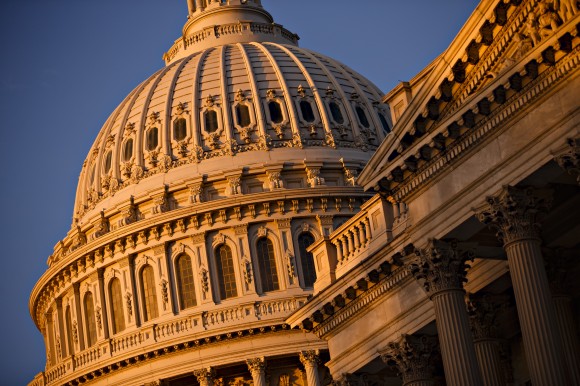As Democrats and Republicans in Washington continue to haggle over government debt and spending, federal flood insurance is among the programs facing disruption.
Without renewed funding, a government shutdown would begin after the end of the fiscal year tomorrow, Sept. 30, and authorization for the National Flood Insurance Program would expire then.
If the NFIP is not reauthorized, NFIP claims for existing policies would still be paid, but the agency could not sell any new policies or renew existing ones.
The fate of implementation of a new flood insurance rating plan is unknown at this time.
There is a proposal to extend short-term funding to the government including the NFIP through Dec. 3 but its fate is uncertain.
Democrats have been trying to prevent a government shutdown and avoid a debt default, but Republicans have been blocking their moves to raise the federal debt limit. The U.S. Treasury said it could run out of money to pay the government’s obligations within weeks if the limit is not raised.
Democrats have also been trying to advance President Joe Biden’s $4 trillion agenda.
Insurance, Housing Groups Urge Renewal of Flood Program That Expires Sept. 30
“The looming expiration of the National Flood Insurance Program is yet another example of how the dysfunction in Washington can hurt Americans,” said Jimi Grande, senior vice president of federal and political affairs, National Association of Mutual Insurance Companies.
This is not the first time the flood program has been caught up in fiscal politics.
Grande noted that Congress has had years to extend the NFIP for a long term, but has only managed to pass short term extensions—16 of them since 2017.
“Whatever their other arguments, Congress needs to do its job and ensure millions of Americans can continue to protect themselves from flooding,” Grande said. “A lapse in the program will jeopardize thousands of home closings, renewals and coverages that American at risk of flood sorely need.”
Earlier this month, NAMIC, along with 18 other organizations, including the Independent Insurance Agents and Brokers of America, National Association of Realtors and the Council for Affordable and Rural Housing, sent a letter to congressional leadership calling for an extension of the program.
Hurricane and wildfire disaster relief efforts across the country should not be seriously hampered by a government shutdown, depending on how long the shutdown lasts.
FEMA, which administers NFIP as well as disaster responses, is run by the Department of Homeland Security, did not respond to a request for information by press time. But in the past, DHS departments have continued to receive funding during government shutdowns. FEMA can also continue to send workers to emergencies.
FEMA is currently involved in disaster relief efforts for victims of the California wildfires, Hurricane Ida, Tropical Storms Fred and Nicholas, flooding in Tennessee and North Dakota, as well as COVID-19.
On Oct. 1, FEMA is slated to begin implementing the new NFIP Risk Rating 2.0 plan, the first major update to NFIP’s pricing system in half a century.
FEMA did not say how a shutdown might affect implementation of the rating plan but it could be affected by legislative attempts to delay the rating changes. U.S. senators from Florida, Louisiana, Mississippi and Texas have introduced legislation to delay the roll out of new risk rating methodology that would result in rate hikes for many residents in their states.
Senators From Gulf Coast States Seeking to Delay New Flood Insurance Rating System
Senator Bill Cassidy M.D. (R-LA),Senator Marco Rubio (R-FL), Senator Cindy Hyde-Smith (R-MS), and Senator John Cornyn (R-TX) have introduced the NFIP Risk Rating 2.0 Delay Act of 2021. The legislation would require the FEMA, which manages the NFIP, to delay that agency’s Risk Rating 2.0 rollout until Sept. 30, 2022.
Topics Flood
Was this article valuable?
Here are more articles you may enjoy.



 Big ‘I’ Report: Independent Agency Channel Placed 62% of Premiums in 2023
Big ‘I’ Report: Independent Agency Channel Placed 62% of Premiums in 2023  Coverage Needed: Hundreds of Thousands in SE Now in Flood Zones With New Maps
Coverage Needed: Hundreds of Thousands in SE Now in Flood Zones With New Maps  Zurich to Buy AIG’s Travel Insurance Business for $600 Million
Zurich to Buy AIG’s Travel Insurance Business for $600 Million  ‘Great Resignation’ Enters Third Year as Workers Embrace AI, Upskilling, PwC Says
‘Great Resignation’ Enters Third Year as Workers Embrace AI, Upskilling, PwC Says 

